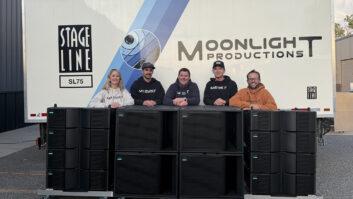Are robotics the future of AV manufacturing? Apparently, Christie thinks so. They’ve long been pioneers in factory engineering—the company’s Environmental Management System (EMS) dates back to 2006. The system, based on ISO 14001, focuses on building and continually improving Christie’s environmental performance in waste reduction, recycling, water and electricity reduction and CO2 reduction.
Initiatives in the first decade included the installation of 2,190 solar panel modules on the Ushio (Christie’s parent company) and Christie office buildings in Cypress, California. That project produced 833,000 kWh annually, reducing CO2 emissions by 814,807 pounds and power consumption by up to 28 percent. The company has applied techniques of LEED Gold including HVAC automation, lighting, soundmasking, and more. Among the stats—a 47 percent decrease in natural gas consumption between 2004 and 2015.
At the time, then-CEO Jack Kline memorably said “we take this seriously and don’t intend on slowing down.” Since then, the company reduced packaging, and supported an employee-driven initiative to reduce foam waste. Christie earned ISO 9001 certifications, and compliance with Restriction of Hazardous Substances Directive (RoHS), Waste Electrical and Electronic Equipment Directive (WEEE Directive), and Registration, Evaluation, Authorization and Restriction of Chemicals (REACH). The company has nearly 20 years of engagement with the UN’s Sustainable Development Goals (SDGs).
Now attention turns to robotics. The company has ramped up its production facility in its Kitchener-based Center for Engineering Excellence to keep pace with demand for MicroTiles LED. The new space includes an internally-designed automation line with robotic handling, to increase manufacturing capabilities by almost threefold. The design of the new area reportedly mirrors some of the most advanced manufacturing facilities in the world and incorporates best-in-class practices, including vertical integration. Two new “pick and place” robots have been installed to perform repetitive, low-level tasks, including moving tiles from conveyors quickly and efficiently. This allows Christie’s manufacturing staff to focus on more advanced tasks.
The plan next is to step up design for manufacturing (DFM), a process used in higher volume industries, like automotive. In this model designing automation becomes integrated with designing the product itself.
The potential for environmentally sustainable and efficient manufacturing in our industry has plenty of headroom and many forms that can take. I’m looking forward to seeing that innovation as it unfolds.






